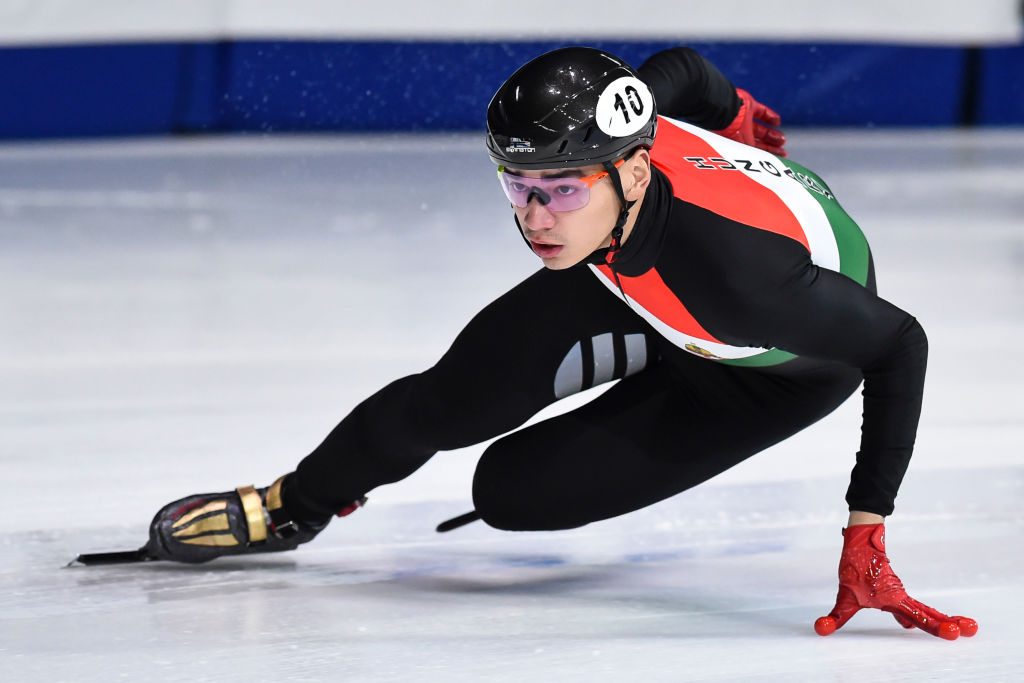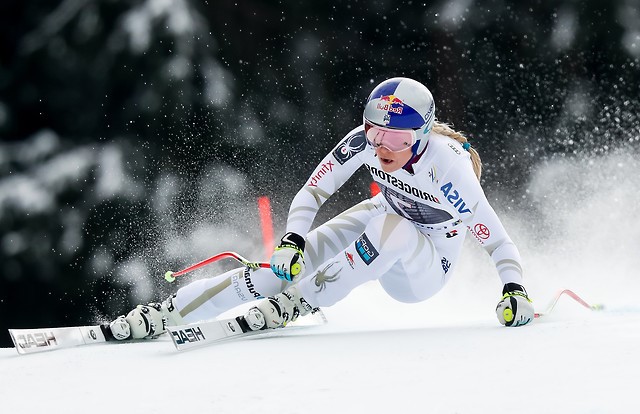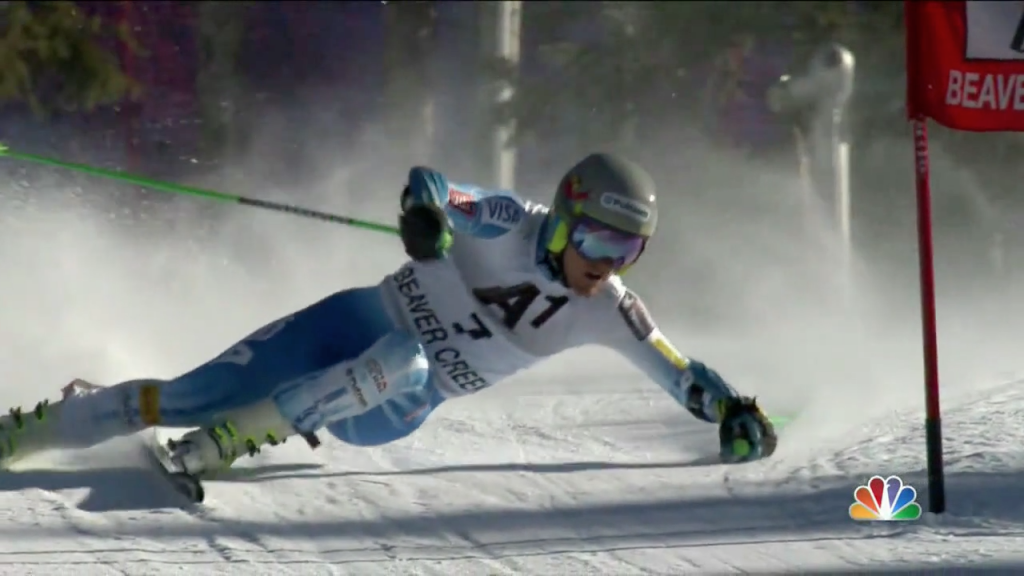Jack skiing cleanly parallel – using basic dynamics.
Scarlet using good, visible dynamics – excellent for first day.
Watching the video I realised that Sara was in the back of her boots and that’s related to feeling tense. (I felt that tension directly when assisting in a “pivot” exercise). While successfully correcting everything I’d already mentioned this is an additional issue that has to be addressed. Still excellent progress and ability to adapt.
Skating/Adductors
Skiing is just disguised skating. The main difference is the skis are wide and have two edges When diverging the skis outwards at the tips into a skating stance the skis want to flatten on the snow and the stiff shaft of the ski boots will pull the knees outward. The adductor muscles need to be engaged to hold the skis on their inside edges. This is a pattern of muscle use – the adductors of both legs contracting – that should be maintained when skiing parallel.
Skis diverging yet holding the adductor muscles active on both legs.
(Jack needed his boots changed and aligned to be able to skate)
To skate more efficiently – fall forward and let gravity generate the forward propulsion.
The key to skiing is being aware of the motion of the centre of mass due to skating and gravity.

Difference between Snowplough and Skating
The key difference between snowplough (converging skis) and skating (diverging skis) is that while skating requires the adductor muscles to be active snowplough requires them to be relaxed.
The snowplough is useful as a tool for learning and for stopping at low speeds and gradients – in ski lift queues etc. but it’s not really a way to ski.
Using Skating muscle to turn in a plough
Integrating the skating muscle (adductor) with the plough is a simple act of activating the muscle on one leg only – the one you want to push you around (left leg turns you to the right). You simply get more strongly deflected due to placing one ski slightly more on edge. There is no “transfer of weight” etc. and you are not trying to apply “pressure” to a ski.
Skating Step turns
Now proper skating step turns! Incrementally moving the centre of mass inwards.
Both James and Floss spontaneously ended up with skis parallel when doing this exercise. This is what we are aiming for – controlled parallel skiing.


Basic Dynamics
- Skis must be travelling forward – like a bicycle
- This is mainly about using the outside leg (start of new turn) to push the centre of mass into the centre of the new turn – for the whole duration of the turn
- There is no “balance” when skiing – dynamics is the physics of disequilibrium
- You are looking for stability from organised accelerations (ski technology!)
- Notice in the photos below the outside leg is essentially straight in a skating action (flexion for absorption and other purposes is primarily at the hip joint)
- The centre of mass goes down toward the snow – and to complete the turn it comes back up – like a motorbike in a turn
- There is no “Centrifugal Force” acting on the skier – only a deflection inward away from a straight line. This deflection is used to lift the skier up at the end of the turn – which involves “finishing” the turn – I.E. turning almost back up the hill.
- Remain square to the skis (follow the skis around the turn with your body) until you are really comfortable with movement of the centre of mass and clearly aware of moving it.


